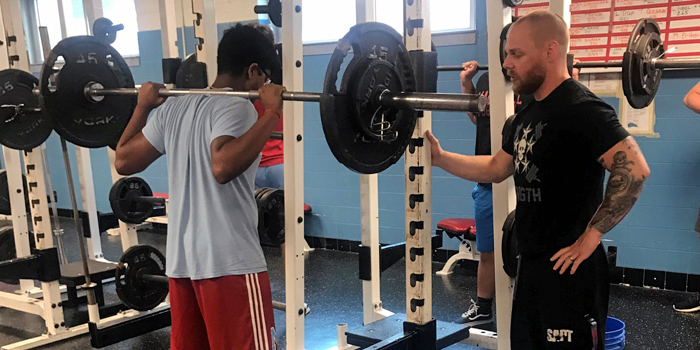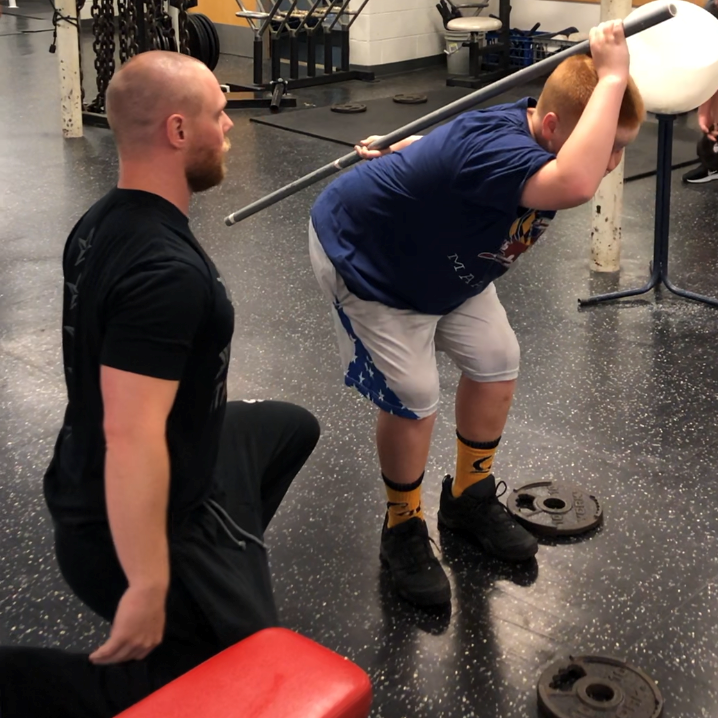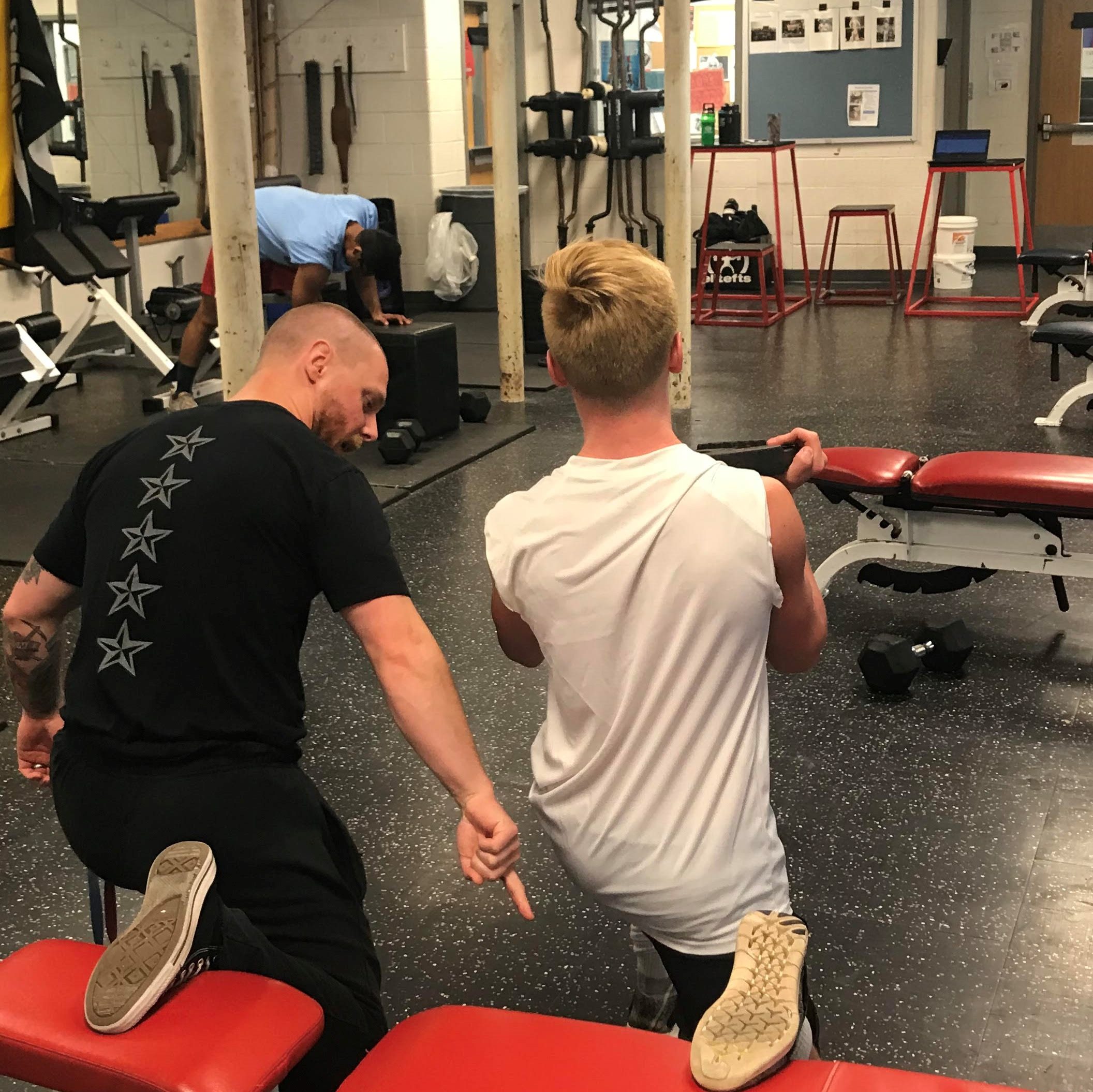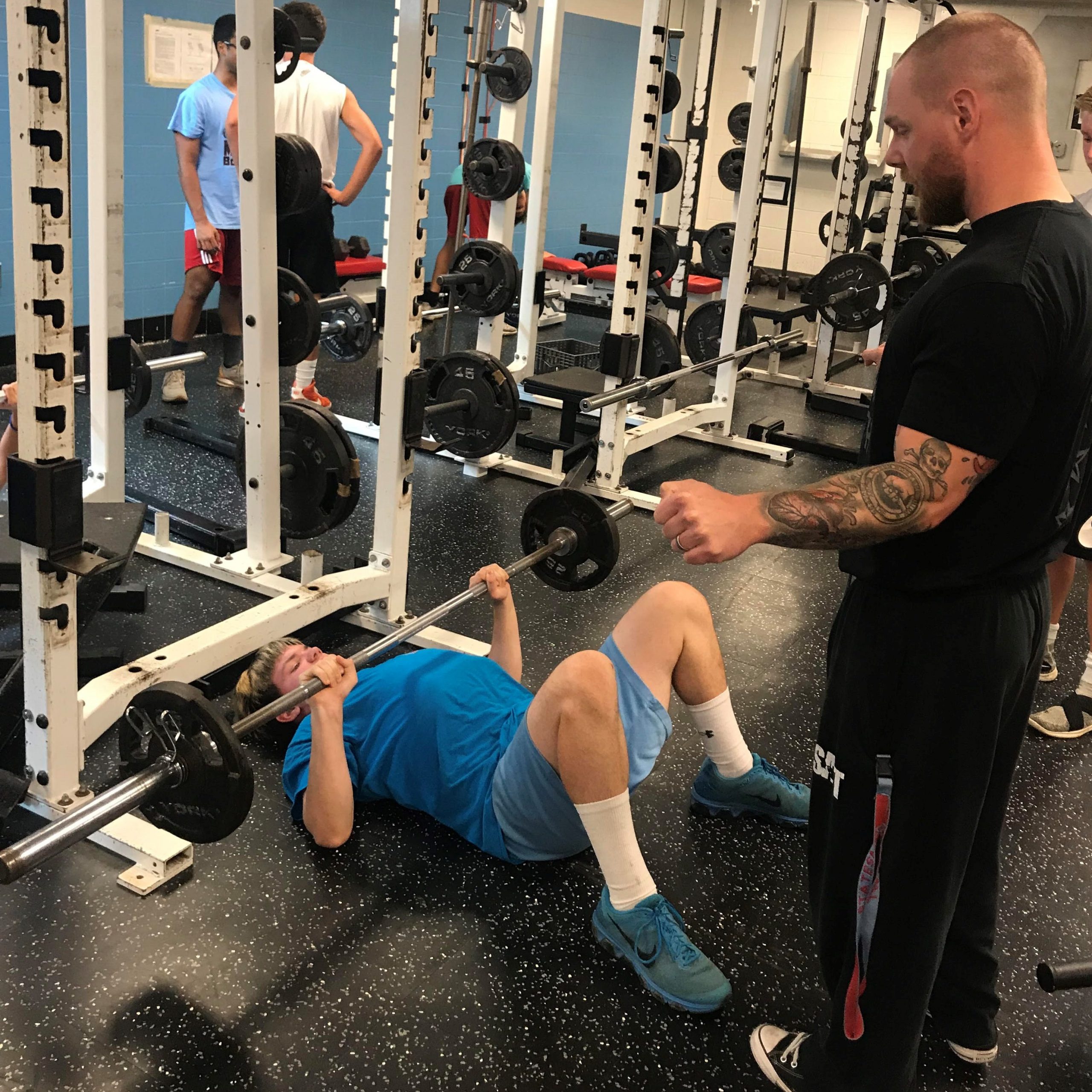
Over the past decade, a growing trend within youth sport has been to pick a singular sport to specialize in with hopes that the child will go on to earn a college scholarship or, better yet, a spot in professional sports. However, in our quest for this goal, we have actually done quite the opposite, and it’s been to the detriment of our youth. Optimizing performance in sport and, to a greater extent, performance in life is a nuanced and sometimes confusing pursuit. This article aims to shed light on how to best set up children for success in athletics and life.
What is Long-Term Athlete Development (LTAD)?
Over the years, there have been multiple systems set up for optimizing athleticism. These systems are set up to develop a child holistically and progressively to garner their best performance in sport and to cultivate a continued interest in sport and fitness for life. Even though these systems have different qualities, they can be collectively called youth talent/athletic development models. One model that has gained traction over the years and is now utilized across a wide range of countries is called the Long-Term Athletic Development model or LTAD.
MORE: Coaches and Parents, Pay Attention!
To be specific, “LTAD is a multi-stage training, competition and recovery pathway guiding an individual’s experience in sport and physical activity from infancy through all phases of adulthood” (Balyi et al., 2016, p. 12). The overarching goal of LTAD is to produce physically literate adults. Ultimately, high-level competitive sports end. With that in mind, if children are properly progressed through an athletic system that is designed to shape them holistically, they are more likely to be successful in not only sports when they are younger but also in fitness through adulthood. Physical literacy is at the core of this idea and is defined best by Balyi et al. (2016):
Individuals who are physically literate move with competence and confidence in a wide variety of physical activities that benefit healthy development. These individuals are able to effectively demonstrate an array of basic human movements, fundamental movement skills and fundamental sports skills across a range of physical environments. They develop the motivation, ability, and knowledge to understand, communicate, apply and analyze different forms of movement. This enhances their physical and psychological wellness, allowing them to pursue sport excellence based on their ability and motivation. (p. 12)
LTAD is designed to take a general to specific approach to athletics across a person’s timeline of child to adult. Often when coaches and parents want to prepare children for sport, they will apply methods based on their chronological age, which can be counterproductive and dangerous. All children develop differently regardless of their chronological age. With that in mind, the LTAD approach is based on tailoring training methodologies according to an athlete’s developmental age to ensure the suitability and effectiveness of the training (Lloyd et al., 2015, p. 1442). While each country can potentially have different names for each stage of development, generally they are the same. We can look at Canada’s LTAD model to learn about the different stages.

LTAD Model Stages
However, before we start to explore the different stages of the LTAD model, we first must look at the history of where LTAD and other forms of talent development models originated. We can trace the beginning of these models back to the Soviet Union with their development of the Conjugate Sequence System (CSS). The CSS was spawned through programs that focused on a multi-lateral skill development system (Myslinski, n.d., p. 3). The CSS was rooted in the idea that building world-class athletes was done by going from general to specific. The idea was to expose young children to a wide range of skills across different abilities, expecting that building separate components would provide a combined foundation that would allow for easier acquisition of more specific skills later (Myslinski, n.d. pg. 4).
This foundation is known as general physical preparation (GPP). GPP as a part of the CSS is best described as “the progressive development of motor skills through a traditional multifaceted motor preparedness and the creation of a functional groundwork for specialized motor abilities. Its exclusive goal is to expose young athletes to a wide variety of physical fitness skills, thus stimulating a healthy development and increasing their functional capacities, motor abilities, and knowledge base” (Myslinski, n.d. pg. 4-5). That brief history lesson shows us that different LTAD models have been around for decades. With history giving a better perspective, we can take a more informed look at Canada’s model.
Stage 1: Active Start
The first stage is known as Active Start. It should consist of unstructured play in nature and focus on developing a wide range of general movement skills often referred to as “fundamental movement skills” (Balyi et al., 2016, pg. 24). Highly structured environments, sports-specific practice, and an emphasis on coaching is not appropriate during this period. While LTAD is not based on chronological age, we can estimate that this stage would occur from zero to six years of age if progressed properly.
Stage 2: FUNdamentals
The second stage is known as FUNdamentals. It is a continued progression from Active Start as we start to see a high level of proficiency in the wide range of movement skills they were developing prior. Athleticism is built upon the foundation of being able to display a wide range of skills across abilities. This foundation will allow an easier transition to more sport’s specific skills later on. During the second stage, children should be sampling different sports that utilize a wide range of skills as children are now developing agility, balance, and coordination (Balyi et al., 2016, p. 50)
Stage 3: Learn to Train
The third stage is known as Learn to Train. We can roughly estimate as long as we account for the correct progression and the individual child that this stage is around 8-12 years old. During this stage, we start to see children work on general sport skills and start to display potential talents. Sampling across a wide range of sports should still be happening as this time frame marks an important developmental point in skill acquisition (Balyi et al., 2016, pg. 52).
Stage 4: Train to Train
The fourth stage is Train to Train and is marked by rapid developmental growth during puberty. While sampling is still happening, children during this time start to realize their propensity for sport skills across a few sports (Balyi et al., 2016 pg. 56).
Stage 5: Train to Compete
Stage five is called Train to Compete and is marked by sports-specific training and a specialization in one sport (Balyi et al., 2016, pg. 58). Again, considering proper progressions and individual differences, we can estimate an age of 16-18 during this stage.
Stage 6: Train to Win
Stage 7: Active for Life
The last stages are called Train to Win and Active for Life. Train to Win is a culmination from a competitive standpoint of the entire progression through the LTAD model. It focuses on optimal performance through sports specific training and competition at the highest level. Active for Life is based on the premise of the entire LTAD model; that the skills and physical literacy acquired along the journey will continue to serve a person for the rest of their life. As adults, they will have the ability to continue to participate in exercise and sport across different “pathways” (Balyi et al., 2016, pg. 7). This continued participation will aid in their health and longevity as they continue to age.

As mentioned earlier, athleticism is not sport-specific in nature. It is a general quality that can be developed through general means. It is the foundation that determines how successful an athlete can be. We can now begin to explore the current paradigm of “early sport specialization” and its detrimental effects on children and subsequently adults.
The Drawbacks of Early Sport Specialization
In the first part of this article, we spent time going over what the long-term athlete development model is and its stages. In this section, I will spend more time going over exactly why early sport specialization is detrimental to a child’s athletic experience and life as well.
Before we get into what early sport specialization is, we need to understand why it’s happening. The growing amount of revenue coming out of sports is staggering, and youth sports are no exception. Along with money comes the hopes of a college scholarship and professional sports. With the privatization of sports and the promises of scholarships, it’s no wonder early sports specialization is occurring so frequently. If there is potential for money at the end of the tunnel, then it would make sense to have a child play the same sport all year round to try and get them as good as possible. That is essentially what early sports specialization is—a concentrated effort in only one sport occurring before the age of 13 (Waldron et al., 2020, pg. 1). This specialization is marked by only sports-specific training that is almost solely deliberate in nature. Looking back on the first part of this article, the first stage of LTAD talked about the need for unstructured deliberate play and not deliberate practice. Deliberate play is defined as “activities that maximize inherent enjoyment, are focused on process and experimentation and are loosely monitored with no immediate focus on correction” (Nash, 2015, pg. 131).
Deliberate play, especially during early childhood development, is extremely important as it plays a role in creativity, better motor skill development and performance, and coping with pressure in the athletic setting. Play is a main factor in longer-term motivation for participation in sport, as deliberate play is intrinsically motivating (Côté & Vierimaa, 2014, pg. 66). Deliberate practice, on the other hand, however, is based on the following, “deliberate practice is designed specifically to improve performance–specific goals, feedback and opportunity for repetition, deliberate practice is not inherently enjoyable but effortful, deliberate practice is motivated by wanting to achieve excellence” (Nash, 2015, pg. 129).
From a developmental perspective, it is clear to see why putting deliberate practice before deliberate play is detrimental. Children are more likely to continue in sport if exposed to a wide range of activities that they find innately enjoyable. It allows them to explore and develop their abilities. Through these experiences, children start to form a more positive outlook on their own competence. If we know the importance of unstructured deliberate play in early childhood, then it becomes even more alarming to see the data that shows “12 percent of all US athletes began competing in organized sport before the age of six… Specialization rates are as high as 70 percent, with an average start age of 10” (Waldron et al., 2020).
Besides the detrimental effect from a motivational standpoint, we can also see why early specialization is harmful from an injury standpoint. If we look at the early parts of the LTAD model, we can see the inherent transfer from the accumulated proficiency in a wide range of general movement skills to more sport-specific skills later on. This is due to the fact that as the child starts to learn more sport-specific skills, they have a better pool of abilities that aid in an easier acquisition of those specific skills. This was a proper holistic progression that coincided with the physical development of the child.
However, early sport specialization requires a disproportionate amount of sport-specific movements in comparison to general movements. Due to this high volume of sport-specific practice, children are more likely to experience reoccurring and serious injury. Compared to multisport athletes, single-sport athletes were one-and-a-half to four times more likely to experience an overuse injury (Waldron et al., 2020, pg. 8).
Sampling across activities and sports in childhood provides a sound foundation for positive self-esteem, increased motivation across life, positive relationships, etc. Early sports specialization can play a big role in negative psychological effects. As talked about earlier, sampling and deliberate play allow a young child to garner confidence across skills. When athletes specialize too early, it can negatively affect their identity (Waldron et al., 2020, pg. 7). This, coupled with stress brought on by the sport's volume of practice, can cause burnout within the sport, which can affect their continued participation in exercise later in life. In this regard, burnout refers to “the multidimensional, psychological syndrome of reduced sense of accomplishment, sport devaluation, and emotional and physical exhaustion (Waldron et al., 2020, pg. 7)

Based on the negative data surrounding early specialization, it is still assumed that people will go that route in hopes of a scholarship. However, if we look closer at the data, we can see that the detrimental effects of early sport specialization probably aren’t worth it towards pursuing a scholarship. Based on statistics provided by the NCAA, only six percent of athletes move on to college athletics. This number isn’t counting scholarships. It is only counting high school athletes that participate in a sport in college. For scholarships, it is only two percent of athletes that are offered scholarships. Of those scholarships that are offered, the majority are not full scholarships (NCAA Recruiting Facts, 2018).
Participation in sport should not be for the purpose of going to college or pro. Athletic participation is a means to transform young people into positive, physically literate, contributing members of society. The skills and experiences from sport should aid in their life, not detract from it.
The Role of S&C and Resistance Training in LTAD
In the first two sections of this article, we talked about what LTAD is, and we dove further into the detriments of early sport specialization. This last section will explore strength and conditioning (S&C) and subsequently the role of resistance training regarding LTAD and athletic performance.
S&C is often thought of as a sports-specific means designed and implemented to improve an athlete’s sports-specific skill performance. While this can be true, what is done within S&C methods and programs is based on the athlete or groups of athletes we work with. When looking at the information that we went over in the previous two sections about early sport specialization, it stands to reason the first job of an S&C program is to train athletes from a holistic perspective. S&C coaches should design programs that seek to progress general movement skills through loaded and unloaded movements to reduce the risk of injury, improve overall athleticism, and improve physical literacy (Lloyd et al., 2015, pg. 1455).
The main duty of an S&C coach is to objectively look at the weaknesses of an athlete and address them accordingly to ensure an athlete’s positive progression through sport and life. When looking at the most common weakness, we can see a lack of developed general movement skills. Simply put, children and adolescents lack a foundation of GPP. This can be surmised by looking at early sports specialization and lack of participation in physical activity.
From an early sports specialization perspective, we can see that today’s young athletes are getting injured at an accelerated rate. It is most likely due to overuse, underdevelopment in the athleticism needed to play sports, and a lack of attention to improving muscular imbalances caused by early specificity (Lloyd et al., 2016, pg. 1497-1498). On the other side of this lack of foundational GPP, we can see that our youth’s overall fitness capabilities are at an all-time low. This lack of physical activity has resulted in a compounding effect over time as we see many youth unprepared for sports and general fitness activities (Lloyd et al., 2016, pg. 1497).
If S&C practices are based on improving general movement skills, we can see that improving these skills can advance an athlete’s ability to learn more sport-specific skills. When youth athletes are given a progressive approach to movement skills through resistance training, we can see improved overall athleticism due to increased muscular coordination and a decrease in sport-related injury by 15-50 percent (Faigenbaum et al., 2009, pg. 65). If the overall goal of youth sport participation is to churn out physically literate people, then it makes sense that the best way to do this would be by giving them a pathway that will allow for both an increase in sports performance and also a foundational understanding of how to exercise for life. S&C and subsequently resistance training is the best conduit to satisfy both of these aspects.
Regarding increases in sports performance, a well-organized S&C program with an emphasis on resistance training has clear benefits towards improving skills such as jumping and sprinting. From a physical literacy perspective and contrary to popular belief, simply playing sports is not enough to become a physically literate person for life. This is best summed up by Lloyd et al. (2016), “It should also be recognized that sports participation alone does not provide a sufficient stimulus to develop high levels of athleticism in youth, as many sport practices fail to provide adequate exposure to recommended daily physical activity guidelines, nor does it allow for individual needs to be addressed such as muscle imbalances or reduced ranges of motion” (pg. 1497). A quality S&C program is essential to a youth athlete’s proper development.
S&C and resistance training has been demonized because of lack of education, poor training execution, and a cumulative effect of perpetuated myths. In fact, if we look at data, we can see that S&C can provide an extreme benefit to the lives of children and is completely safe as long as training sessions are safely conducted using a suitable developmental approach (Lloyd et al., 2016, pg. 1497). Even when using maximal external load specific to an individual child while observing the correct technique, we do not see injuries. In fact, the force needed to move a maximal load is probably lower than the forces that are absorbed during sports or other free-play activities (Faigenbaum et al., 2009, pg. 64).
Another myth that continues to hang around S&C and resistance training is that lifting weights will cease growth development in children. Again, if we look at the data, we can see that quite the opposite is true. According to Faigenbaum et al. (2009), “current observations suggest that childhood and adolescence may be the opportune time for the bone modeling and remodeling process to respond to the tensile and compressive forces associated with weight-bearing activities. Indeed, weight-bearing physical activity is essential for normal bone formation and growth. If age-specific resistance training guidelines are followed and nutritional recommendations are adhered to, regular participation in a resistance training program can maximize bone mineral density during childhood and adolescence. Moreover, there is no detrimental effect of resistance training on linear growth in children and adolescents” (pg. 66).
If we circle back around to the idea of physical literacy, we want to set youth athletes and children up for success later in life. We also want to help children who are currently sedentary in their pursuit of physical literacy. If we look at the benefits of correct resistance training irrespective of sport participation for children, we can see the net positive effect on every demographic. Children who participate in resistance training show the same positive benefits of playing sports, such as better socialization and work ethic (Faigenbaum et al., 2009, pg. 67). Furthermore, obese children who participated in resistance training showed a better body composition response than children who participated in aerobic-based activities. This is most likely because aerobic-based activities can be painful and mentally debilitating for obese children (Faigenbaum et al., 2009).
If implemented properly, a strength and conditioning program can bridge between increased athletic performance and a life-long pursuit of health and wellness so that athletes and non-athletes can flourish in both sport and quality of life.
References
- Balyi, I., Way, R., Higgs, C., Norris, S., & Cardinal, C. (2016). Sport For Life—Long-Term Development Resource Paper 2.1. Sport for Life Society.
- Lloyd, R. S., Oliver, J. L., Faigenbaum, A. D., Howard, R., De Ste Croix, M. B. A., Williams, C. A., Best, T. M., Alvar, B. A., Micheli, L. J., Thomas, D. P., Hatfield, D. L., Cronin, J. B., & Myer, G. D. (2015). Long-Term Athletic Development- Part 1: A Pathway for All Youth. Journal of Strength and Conditioning Research, 29(5), 1439–1450. https://doi.org/10.1519/JSC.0000000000000756
- Myslinski, T. (n.d.). The Development of the Russian Conjugate Sequence System. Elitefts. Retrieved June 28, 2019, from https://www.elitefts.com/education/the-development-of-the-russian-conjugate-sequence-system/
- Côté, J., & Vierimaa, M. (2014). The developmental model of sport participation: 15 years after its first conceptualization. Science & Sports, 29, S63–S69. https://doi.org/10.1016/j.scispo.2014.08.133
- Nash, C. (Ed.). (2015). Practical sports coaching. Routledge.
- NCAA Recruiting Facts. (2018). National Collegiate Athletic Association.
- Waldron, S., DeFreese, J. D., Register-Mihalik, J., Pietrosimone, B., & Barczak, N. (2020). The Costs and Benefits of Early Sport Specialization: A Critical Review of Literature. Quest, 72(1), 1–18. https://doi.org/10.1080/00336297.2019.1580205
- Faigenbaum, A. D., Kraemer, W. J., Blimkie, C. J. R., Jeffreys, I., Micheli, L. J., Nitka, M., & Rowland, T. W. (2009). Youth Resistance Training: Updated Position Statement Paper From the National Strength and Conditioning Association: Journal of Strength and Conditioning Research, 23, S60–S79. https://doi.org/10.1519/JSC.0b013e31819df407
- Lloyd, R. S., Cronin, J. B., Faigenbaum, A. D., Haff, G. G., Howard, R., Kraemer, W. J., Micheli, L. J., Myer, G. D., & Oliver, J. L. (2016). National Strength and Conditioning Association Position Statement on Long-Term Athletic Development: Journal of Strength and Conditioning Research, 30(6), 1491–1509. https://doi.org/10.1519/JSC.0000000000001387
- Lloyd, R. S., Oliver, J. L., Faigenbaum, A. D., & Howard, R. (2015). LONG-TERM ATHLETIC DEVELOPMENT, PART 2: BARRIERS TO SUCCESS AND POTENTIAL SOLUTIONS. Journal of Strength and Conditioning Research, 29(5), 1451–1464.
Ryan Wood works as a strength and conditioning coach for Strength & Performance Training, Inc. in Fairfax, Virginia. Here he trains clients ranging from eight years old to their mid-70s. He also works as a teacher and an S&C coach for Fairfax County Public Schools, where he teaches Personal Fitness—a strength and conditioning elective course for high school students. Ryan holds a CSCS, a bachelor's degree from George Mason University in Health & Physical Education, and a master's degree from West Virginia University in Sport Coaching.










